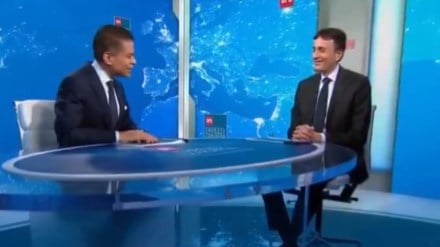Global investor Ruchir Sharma, who heads The Rockfeller Foundation, said the current AI-powered stock market boom in the US may be “the most hated bubble in history.” He warned that rising prices, huge investments, and growing debt look very similar to what happened before major past market crashes.
Speaking to Fareed Zakaria on CNN, Sharma said the four classic signs of a bubble includes, overvaluation, over-investment, over-leverage, and over-ownership, are clearly visible in today’s AI market.
What else Sharma say?
Sharma also referred to research by Nobel Prize–winning economist Robert Shiller, which shows that today’s US stock market prices are extremely high. According to him, current valuations can only be compared to two moments in history which includes, right before the 1929 Great Depression and just before the 1999 dot-com crash.
Sharma added that spending on AI is happening at a speed and scale similar to, or even greater than, the investment wave during the internet boom of the early 2000s. Companies are investing aggressively, trying not to fall behind in the AI race.
When will ‘AI bubble’ burst?
Sharma said it is nearly impossible to know exactly when a bubble will burst. But historically, bubbles tend to collapse either when investors run out of cash or when the US Federal Reserve increases interest rates, making borrowing more expensive.
He added that the recent anxiety in the stock market came after fears that the Federal Reserve may delay expected interest rate cuts this December. If inflation rises again and Fed decides to increase rates next year, he warned it could trigger a major drop in the market.
‘People are really scared about what AI may bring’
According to data from The Wall Street Journal, the share of people who feel comfortable adopting new technology has fallen sharply from 72% in 1995 during the dot-com era to just 31% today.
Sharma explained that public anxiety is high because “People are really scared about what AI may bring,” and even those excited about AI worry about risks like job losses and social disruption if workers cannot adjust fast enough. Sharma said that when this AI bubble finally bursts, the reaction will be mixed. It will feel “relieving and painful,” as markets adjust from hype to reality.
